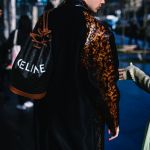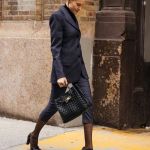
How Covid-19 has changed the secondary fashion market
The second-hand luxury trends according to Vestiaire Collective
July 18th, 2020
In recent years, the luxury secondary market has grown without precedent, democratizing fashion for hundreds of thousands of consumers and also becoming a smart and sustainable option for an ever-growing community of users. The secondary luxury market, unlike the primary, has found a perfect habitat in the digital world, and through increasingly fluid and sophisticated apps and websites has managed to develop even though the dramatic months of lockdown caused by the Covid-19 pandemic that has instead caused enormous damage to the primary fashion market.
One of the most important retailers in the secondary luxury market is Vestiaire Collective, the digital marketplace platform founded in France in 2009, which has published in recent days the report The Smart Side of Fashion to tell how the Covid-19 has influenced the growth and research of the secondhand market and the new trends that have emerged in recent months.
Sustainability
Sustainability and circular economy issues underpin Vestiaire Collective's identity and values. According to the BCG's Fashion and Luxury Perspective report on global consumer sentiment during Covid-19, 37% of consumers tend to prefer brands whose values can be mirrored, both in terms of humanitarian charity and sustainable initiatives. The principles of Vestiaire Collective were explained by Dounia Wone, the company's sustainability manager:
«Our mission? Educate the community about sustainability so that decisions are verified and even more accountable. Buy less, but buy quality; choose second-hand garments and say no to fast fashion; prefer sustainable brands if you're buying a new product. Because the best waste is the one that isn't generated».
The company's sustainable policies led to an increase in orders of +119% in May 2020 compared to the previous year, with a 50% increase in users using the direct shipping service. Shopping habits have also undergone a radical transformation, following the "drastic and immediate prioritisation of time, budget and utility". In the months of lockdown, e-commerce has also proved to be the only solution for most users by also changing the traditional reasons for seasonal shopping have been replaced by the need for comfortable clothes and leisurewear.
The sportswear category also grew during the entire pandemic period with research by adidas and Nike increasing by 71% and 64% respectively. The community has also looked for fashion alternatives to masks, leading the search for scarves to rise, especially those of Hermès and Louis Vuitton, while increasing searches for sustainable brands such as Stella McCartney or socially responsible like Ganni. The most trendy sustainable brands were Loq, Marine Serre, Ulla Johnson, GmbH and Veja.
Current trends
Always in line with that increasingly close relationship between brand value and consumer sentiment, Vestiaire Collective's female clientele preferred to buy brands that defended community values such as sustainability and feminism. The first brand to see a quarterly increase in sales volume was Jean-Paul Gaultier with an increase of 38%, followed by Dior, whose sales increased by 22% also thanks to the emphasis placed by Maria Grazia Chiuri on the issues of female empowerment, while Versace, which grew by 18%, enjoyed the media exposure catalyzed by the appearance of Jennifer Lopez at the brand's fashion show. The three most popular bags were Gucci's Jackie, thanks in part to the visibility given to him by Harry Styles, Phoebe Philo's Cèline Trio and Fendi's Peekaboo.
The trend of men's fashion has been twofold: on the one hand there has been an interest in formalwear aesthetics manifested through an increase in sales of products by Tom Ford and Ralph Lauren, on the other a renewed love for accessories (even women's ones) that has seen a 15% increase in sales of bags and straps of Bottega Veneta. A certain interest has also developed towards more experimental and niche aesthetics, with an accentuation of the choices of genderless or unisex products. The best-selling sneakers are in most cases more minimal like Gucci's Ace and Valentino's Rockrunner but also more structured options such as Balenciaga's Track.
Future trends
In a world with increasingly uncertain and worrying dynamics, the world of fashion has become for many an escape – the importance and cultural resonance of which have been increased thanks to events such as fashion week and the Met Gala. According to the Vestiaire Collective report, the tastes of the average consumer are increasingly moving towards items with the most durable life and the highest quality while digital media plays an increasingly central role, as evidenced by the case of designer Minju Kim who saw her name searches increase by 1483% after her victory over Netflix reality show Next in Fashion.
Vintage also seems to be a fast-growing category, both because it is not influenced by availability as it happens to new garments, and because it allows users more time to conduct shopping research. The Balenciaga of the era of Nicolas Ghesquiere dominates the vintage rankings, followed by Galliano, Margiela, Prada and Miu Miu. Searches for sustainable brands will continue to grow, while a trend from the Southeast Asian area is the capitalization of safe-haven assets such as Rolex and Omega watches and Hermès garments.











































































